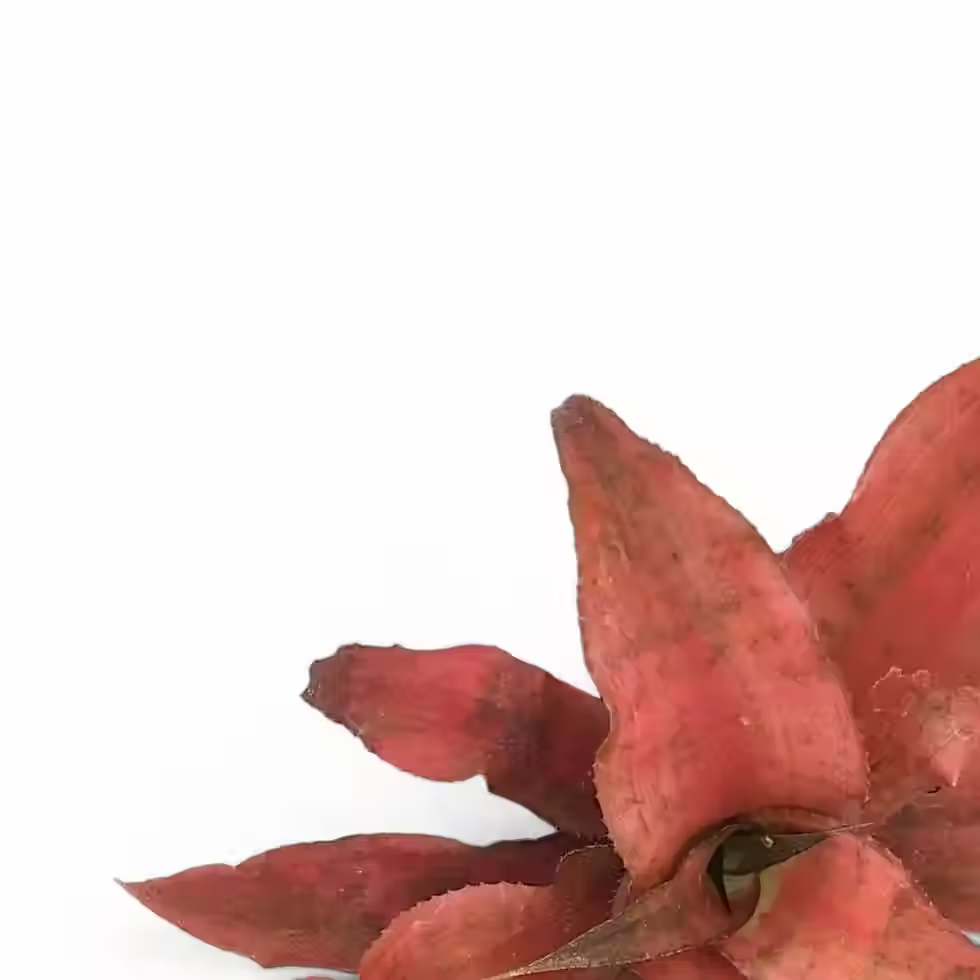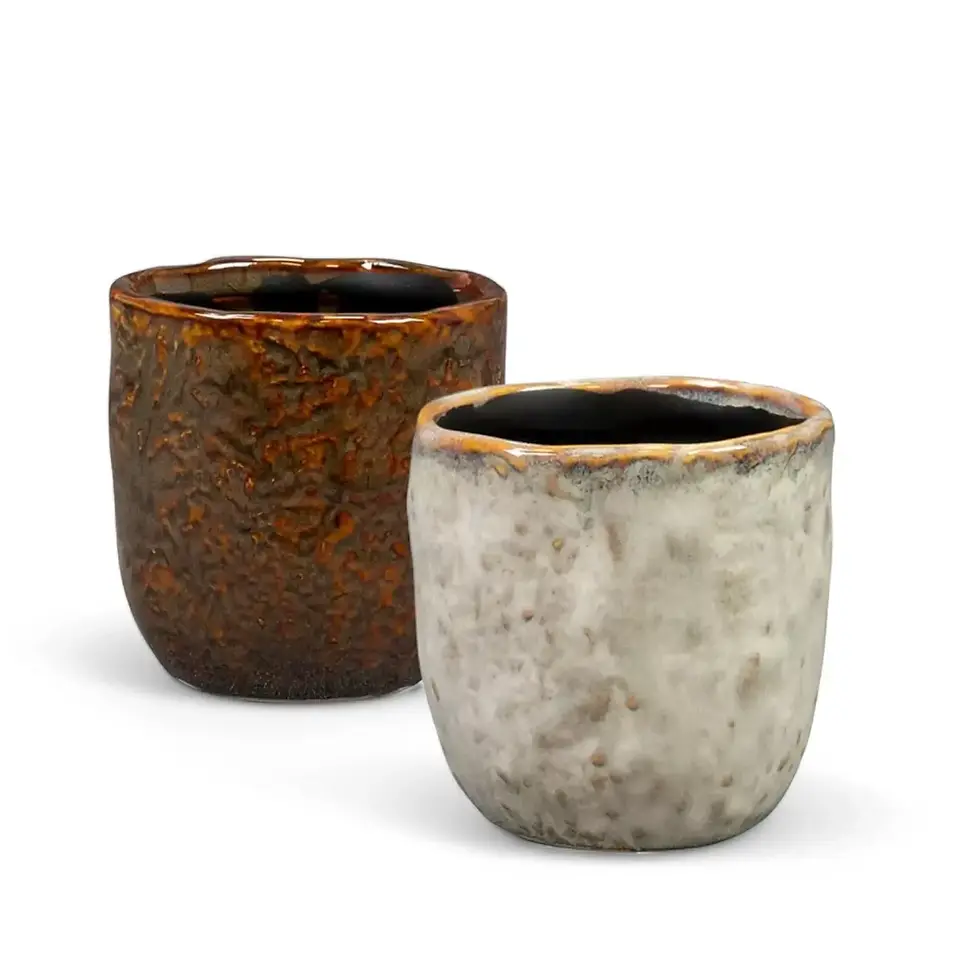Theobroma cacao - Information and Care Guide:
Theobroma cacao, commonly known as the cacao tree, is a fascinating plant with a rich history and cultural significance. Originally from the Amazon rainforest, this unique plant is not only the source of chocolate but also makes an attractive and unusual houseplant. With its compact growth and ability to thrive in indoor conditions, it can add a touch of exotic greenery to any plant collection.
Features of Theobroma cacao:
Theobroma cacao is a small evergreen tree that reaches a modest height of around 15 metres in its natural habitat, but significantly less when cultivated indoors. Its slender trunk is an adaptation to the shaded undergrowth of the rainforest, where it relies on neighbouring trees for support. One of the most striking features of this plant is its cauliflorous habit, producing small yellowish to reddish flowers directly on its trunk and larger branches. These flowers, which can bloom throughout the year, are followed by the development of oblong, yellow-brown fruits. Each fruit, about 30 centimetres long, contains rows of seeds known as cocoa beans, the key ingredient in chocolate.
Theobroma cacao Care Guide:
Taking care of a cacao tree at home requires a bit of attention but is rewarding. Here are some essential tips:
- Light: Prefers bright, indirect light but can tolerate partial shade. Avoid direct sunlight as it can scorch the leaves.
- Temperature: Keep in a warm environment, ideally between 20°C and 30°C. It does not tolerate cold drafts or temperatures below 15°C.
- Humidity: Thrives in high humidity. Use a humidifier if the indoor air is too dry, especially during winter.
- Watering: Water regularly, keeping the soil slightly moist but not waterlogged. Allow the top layer of soil to dry out between waterings.
- Soil: Use well-draining, loamy soil with good organic content. Avoid heavy, compacted soils.
- Fertilization: Feed monthly with a balanced, water-soluble fertilizer. No need to differentiate fertilization throughout the year.
- Pruning: Prune occasionally to maintain a compact shape and remove any dead or damaged leaves.
Common Issues and Solutions:
Like all plants, Theobroma cacao can encounter a few common issues:
- Yellowing Leaves: Could indicate overwatering or nutrient deficiency. Check the soil moisture and adjust watering schedule accordingly.
- Browning Leaf Tips: Often a sign of low humidity or inconsistent watering. Increase humidity and ensure regular, even watering.
- Pests: Watch out for spider mites and mealybugs. Treat infestations promptly with insecticidal soap , neem oil, or use beneficial insects.
- Root Rot: This can occur if the soil is too wet. Ensure good drainage and reduce watering frequency if needed.
Additional Tips for Theobroma cacao:
- Placement: Choose a spot with stable temperature and humidity levels. Avoid placing it near heating vents or air conditioners.
- Propagation: Cacao trees can be propagated from seeds, though this process is slow and requires specific conditions. It's usually better to purchase a young plant.
- Companionship: Although it grows slowly indoors, cacao appreciates being surrounded by other plants that provide a bit of shade and help maintain humidity levels.
Researching the natural habitat of Theobroma cacao can help replicate its preferred conditions at home. Mimicking the warm, humid environment of the rainforest will ensure your cacao plant thrives rather than just survives.
Etymology of Theobroma cacao:
The genus name Theobroma translates to "food of the gods" in Greek, reflecting the plant's significant role in ancient cultures, particularly among the Mayans and Aztecs. The species name cacao is derived from the native term "kakawa," used by indigenous people in Central and South America.
Interesting Facts about Theobroma cacao:
- The cacao tree is one of the few plants that produce flowers and fruits directly on the trunk, a phenomenon known as cauliflory.
- The seeds of the cacao tree were once used as currency in Mesoamerican cultures.
- Cacao is considered sacred in many indigenous cultures and is often used in traditional rituals and ceremonies.
FAQs about Theobroma cacao:
- Q: Can I grow a cacao tree from a cocoa bean?A: Yes, but it requires fresh, untreated beans and specific growing conditions. It can be a challenging process, and starting with a young plant is generally easier.
- Q: How long does it take for a cacao tree to bear fruit?A: In optimal conditions, it can take about 3-5 years for a young cacao tree to produce its first fruits.
- Q: Why is my cacao tree not flowering?A: Lack of flowers can be due to insufficient light, low humidity, or the plant being too young. Ensure it receives adequate care and be patient, as it may take a few years to mature.
Theobroma cacao
Theobroma cacao is approximately 65 cm tall and comes in a ⌀ 19 cm pot

























































